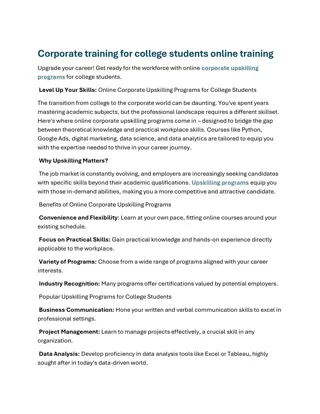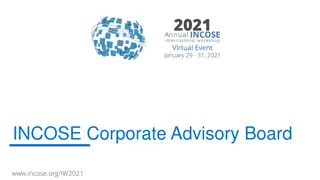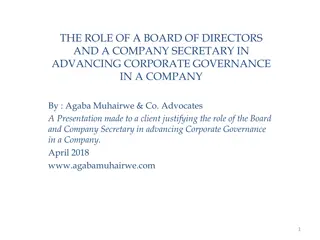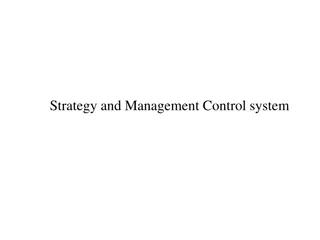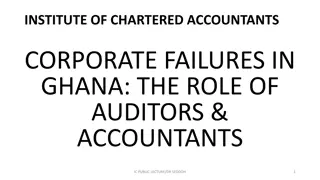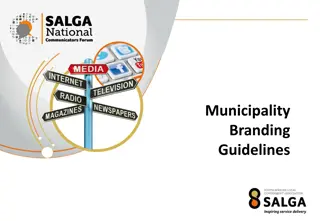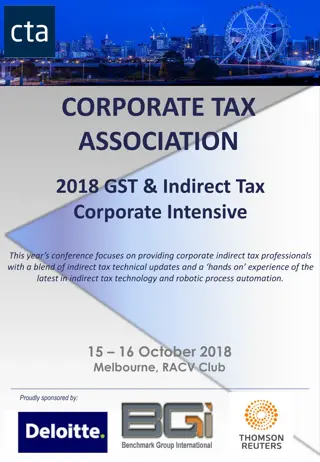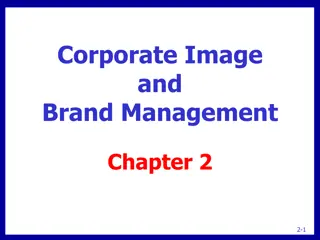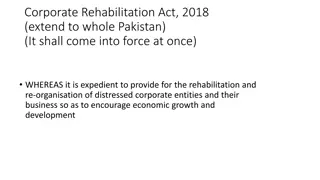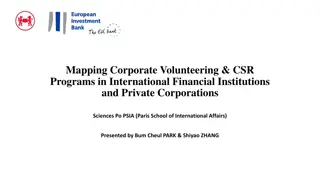Trends in Public Corporate Board Dynamics
The dynamics of getting on a public corporate board have been evolving over the years, with a decrease in the number of public companies and board positions in the US. Time commitment and board compensation are on the rise, but at varying rates. Board refreshment is primarily driven by retirements, term limits, and changing business needs. Contrasts between public and private boards include legal compliance, SEC reporting, and compensation differences. Director needs vary based on the company's life cycle stage. New independent directors bring diverse backgrounds, with active or retired CEOs forming a significant portion.
Download Presentation

Please find below an Image/Link to download the presentation.
The content on the website is provided AS IS for your information and personal use only. It may not be sold, licensed, or shared on other websites without obtaining consent from the author.If you encounter any issues during the download, it is possible that the publisher has removed the file from their server.
You are allowed to download the files provided on this website for personal or commercial use, subject to the condition that they are used lawfully. All files are the property of their respective owners.
The content on the website is provided AS IS for your information and personal use only. It may not be sold, licensed, or shared on other websites without obtaining consent from the author.
E N D
Presentation Transcript
THE DYNAMICS OF GETTING ON A PUBLIC CORPORATE BOARD ELLEN B. RICHSTONE JUNE 2017 1
NUMBER OF PUBLIC COMPANIES HAS REDUCED: US BOARD POSITIONS LESS 1997 through 2016 US down by 46% NON US up by 28% -------------------------- Number of Directors on each US board also dropping- average 11 for large cap; 9 for Mid Cap; Many going down to 7 2
Time Commitment Time Commitment Rising Average Age of Directors increasing Board Compensation rising slower than time commitment 3
Board Compensation (2016) Size* Avg. Total Compensation % Cash Micro $121,000 51% Small $157,292 47% Medium $181,400 44% Large $222,300 44% Top 200 $272,000 42% All Firms $191,500 45% Micro ($50-499); Small ($500-999); Medium ($1-2.4 Billion); Large ($2.5 B-9.9) Top 200 ($10 Billion plus): 4 Source: 2016-2017 NACD Director Compensation Report
BOARD REFRESHMENT: WHAT DRIVES IT? MAJORITY: RETIREMENTS TERM LIMITS ILLNESS OR DEATH SPECIAL SITUATIONS M&A CHANGING NEEDS IN BUSINESS STRATEGY ACTIVIST SHAREHOLDER 5
Differences between Public and Private Boards Needs Legal Compliance SEC reporting Visibility: Reputational Risk Time Commitment COMPENSATION (not negotiable) 6
Director Needs Change with Company Life Cycle Start UP Rapid Growth Maturity Distressed TYPE: Private Hands On/ Specialization Broad Exp Legal, Exit M&A Pre-Pub Prior IPO Specialization Indust Exp Legal; M&A Public SEC Finan/ IR, Marketing --- Corp Finance/M&A Mature/ Public ---- ----- Broad indust Exit strategy New Prod intro/ Life Cycle Mgmt. 7
CHARACTERISTICS OF NEW INDEPENDENT DIRECTORS Title or Skill set Financial Background Divisional President/Functional Active CEO s/ Presidents Retired CEO s Academics/nonprofit Consultants Lawyers Others ACTIVE OR RETIRED CEO S MAKE UP 38% OF NEW INDEPENDENT DIRECTORS 2006 24% 15% 29% 11% 8% 5% 2% 6% 2016 25% 23% 19% 19% 4% 3% 1% 6% 8
How Do Boards Decide on Needs: Hot Need Areas: Digital Marketing Technology Sitting CEO of Public Company Financial Expert/ Experience as Audit Chair of a Public Company 9
THE CURRENT ENVIRONMENT: LOOKING FOR A DIRECTOR Lots of candidates Most boards do not want to be your first public board they want you to go through learning process elsewhere Premium on Women or Minority Candidates but still 75% of seats going to white males Age can be a factor: Age limits are moving to between 72-75: Most boards do not want someone for less than eight to ten years. So after 65 probability of getting on your first board drops significantly. 10
SO HOW DOES A BOARD DECIDE WHO TO ADD? IT STARTS WITH AN EVALUATION OF WHO THEY HAVE REINFORCED BY REQUIREMENT TO DISCLOSE WHAT EACH DIRECTOR s VALUE IS. NOMINATING GOVERNANCE USUALLY TAKES LEAD 11
Skill Matrix Review: Board Composition Company s strategic plan Future combined with tactical expectations Evolving Structure Strengths, style interests Competency today and in the future Succession discussion Gap analysis today and in the future Sample skills matrix- handout 12
Best ideas for getting on Boards NETWORK SPEND TIME WHERE BOARD DIRECTORS ARE ROLE OF RETAINED SEARCH FIRMS IN BOARD SEARCH 13
Spend time where Directors spend time NACD (National Association of Corp Dir) Seat at the Table WCD (Women Corporate Directors) ACCD (American College Corporate Directors) Audit Firms have Audit Committee programs; Deloitte-Governance. Law Firms have Director institutes Board Leaders 14
KEY STEPS: 1 Understand your value add Board Style: Bio and Resume- different than traditional Education: Bootcamps/ Webinars; programs to be current with public company board issues; Demonstrate your seriousness. 15
KEY STEPS: 2 Networking with: People you know WELL professionally who currently sit on public boards People you know WELL professionally who are advisors to public boards People you know well- personally who currently sit on public boards Getting on your first board is the hardest: 80- 90% of the time it will be through your network. 16
Once you get the interview? Questions to Ask Before you join a Board (article-handout) Be prepared Come with questions: strategic as well as tactical 17
Time Frame From start of process: often quoted for first board: 18-24 months Faster if need is urgent: example Audit Chair 18



